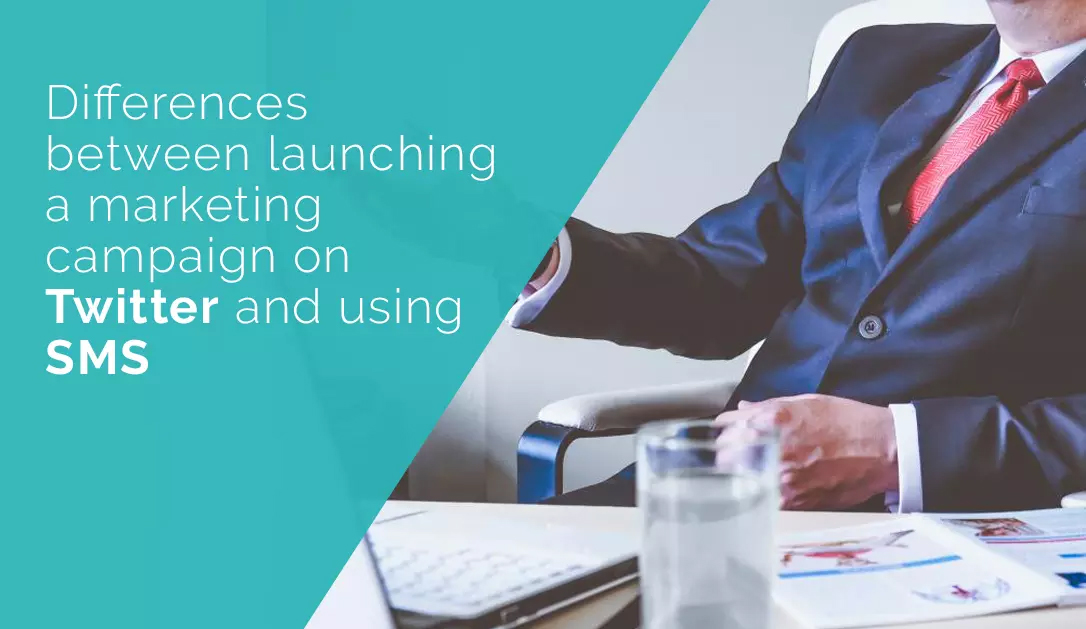Last update: Jun 28, 2022
Differences between launching a marketing campaign on Twitter and using SMS


The statistics tell us that we send up to 46 times more SMS messages than messages through social networks.
According to the statistics, we check our social media profiles on average 20 times per day. The large majority of companies prepare and launch marketing strategies on social media to offer us their products and services in an attempt to increase conversion rates.
Twitter is now one of the most popular social networks: you can send short and relevant messages, share images or links.
If you have a loyal audience, understand resources like hashtags and handles, and adapt to the latest trends of the market, this marketing strategy can be very profitable. On the other hand, there is another strategy that works very well but is proportionally underused: SMS messaging.
Yes, we’re talking about the classic text message that is sent straight to your mobile phone. This article will share information and links to make your messages more interesting.
What’s more interesting, a publicity campaign on Twitter or using SMS messaging? We’re going to take a look at this issue in more detail in the following points.
If we think about it carefully, Twitter and SMS isn’t so different. In both cases there is a limited number of characters (to 140 and 160 respectively), they are both instant channels of communication, and their use is on the rise.
The statistics tell us that we send up to 46 times more SMS messages than messages through social networks.
One of the biggest differences between the two platforms is the number of people that have to manage the platform simultaneously. With an SMS, there is no one else – just the company and the client – so we can be sure that the information is going to arrive to the right recipient, and at least in the vast majority of cases, will be read.
In comparison, on Twitter, a message (a tweet) has a shelf life of approximately 18 minutes. That is to say that if in that time, the message hasn’t achieved what it was designed for, it’s likely that it will be lost forever.
For this exact reason it doesn’t surprise us at all that 40% of tweets don’t get a reply. When you compare this data to SMS, the results are even more significant: SMS have an open rate of 98% and a reply rate of 45%.
Another one of the key differences between both platforms how messages can be interpreted differently.
When a message is public, like a message published on Twitter, they have a higher chance of being misinterpreted. This can have a hugely negative impact on the brand image.
In addition, we are all used to how outrage functions on social media: someone just has to upload a screenshot of the content manager’s answer to ruin a marketing strategy that a brand has been working on for days, even months.
With SMS, it is a lot easier to control this type of situation: when messages are more personal, it minimizes the risk of misinterpretation… although not always, so it’s still important to take care.
In principle, both of these methods can be automated, that is to say, that both of them can be programmed to send messages automatically on specified days and times. However, Twitter is relatively restrictive with this.
According to Twitter, automatic reply campaigns can be considered a breach of its terms of service, so you would need the social network’s approval, and to follow its rules and regulations.
When creating a bulk messaging marketing strategy with SMS, there are also certain regulations that need to be followed but in general, these are nowhere near as restrictive as what Twitter imposes on companies and brands.
To make sure your company’s campaign is a success, we recommend that you combine strategies from both areas and invest more time in what works for you. With this trial and error approach, you’ll create your own definitive style of marketing.